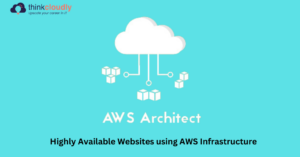Introduction AWS infrastructure
Shifting to e-commerce has become more of a necessity than a want for everyone who owns businesses or runs organizations. This is the proof that Cloud computing and people who are skilled in various features of it are so important in this time and age. As cloud provides the ability to create highly available (HA) and fault tolerant applications, it is an irreplaceable facet as these things cannot be achieved with on-premise data centers. Going into numbers, the AWS infrastructure has 21 geographical regions where 66 availability zones (AZ) are accessible and there is vacancy for more such Regions and AZs.
So what does the Global AWS Infrastructure include?
- Regions and Availability Zones (AZ)
Amazon cloud computing resources are made available by Amazon all over the world in manifold locations, which consist of AWS Regions, Availability Zones, along with Local Zones. Here,in the AWS Infrastructure, every AWS Region is an individual geographic area, furthermore, they have multiple isolated locations which are known as Availability Zones.
- Data Centers in Availability Zones
In the AWS Infrastructure, an Availability Zone is a singular Data Center or can even be a collection of Data Centers which are in a region. In an Availability Zone the Data Centers are situated far apart from each other and this ensures that the risk of every Data Center going down is reduced in case any disaster occurs in the region.
The factors which are considered while picking an AWS Region are :
- Pricing
- Security and Compliance Requirement
- The location of maximum users
- Service Availability
- Edge Locations
In the AWS Infrastructure, Edge Locations are AWS Data Centers which are designed to deliver services which offer as low latency possible.Edge Locations as a term was provided by AWS CloudFront Service. Amazon has provided enough of such data centers all around the world. These Data Centers are located near the Amazon users than regions or Availability Zones which are usually in major, populated cities so that it ensures prompt replies.
AWS provides high availability and fault tolerant architecture for a public cloud provider which makes crafting websites remarkably uncomplicated and it is also acclaimed for that. Following some simple steps will guide you well in making some thriving and able websites using the AWS Infrastructure.
STEP 1
Designing Multi-AZ Deployments
As we had already mentioned above, AWS data centers are present everywhere in several locations globally, and the locations where these data centers are situated are called Regions according to the AWS terminology. Currently, there are around 13 regions around all the continents which include, 5 in North America, 1 in South America, 5 in Asia Pacific and finally, there are 2 in Europe. As we know that each of these Regions will have many Availability Zones (AZ) and it is important to deploy your website in more than one Availability Zones as if one AZ goes down, then the other AZ where you have deployed your website will handle all the traffic. This is done with the help of Elastic Load Balancer (ELB) service that is also provided by AWS which assists in enabling such multi-AZ deployments.
STEP 2
Configuring Auto-Scaling
Auto-Scaling helps in turning the unhealthy instances into healthy ones after ELB has directed the traffic to some other AZ, and makes sure that all the AZs have an equal number of instances as possible so that the services are provided without any interruption. The Auto-Scaling Groups (ASG) also help in enhancing as well as reducing the number of EC2 instances.
STEP 3
Configuring Multi-AZ Database
All the websites that you see all over the internet are using some or the other database in the AWS Infrastructure, be it RDBMS or NoSQL. It is essential to always remember to take care of your databases as the single point of failure can arise from there no matter how much care you take for making your architecture resilient.
STEP 4
Multi-Region Deployment
In case of achieving high availability on Multi-AZ, as in in multiple regions, then it is used. As there is also a risk of the entire region going down which makes the functioning of a website difficult if it is deployed in the AZs in one region itself. One can use an AWS Route 53 Setup that provides various ways to design such multi-region deployments.
STEP 5
Static Site on S3
Even though this is a rare scenario, there can be some situations where more than one region can go down at once and here, even a multi-region deployment strategy would fail, and this is where S3 comes in. In simple terms, if your website goes down due to region failures, one can still access the website on S3.
Conclusion
Keeping such simple things in mind makes it very easy to create high availability websites on the AWS Infrastructure using the infrastructure as code tools. These infrastructure as code tools are highly useful when it comes to making such websites on the AWS Infrastructure. The infrastructure as code tools ensure that we keep our customer experience and website availability high on priority, even though it might add a little to the cost of the making of the website.







No comment yet, add your voice below!